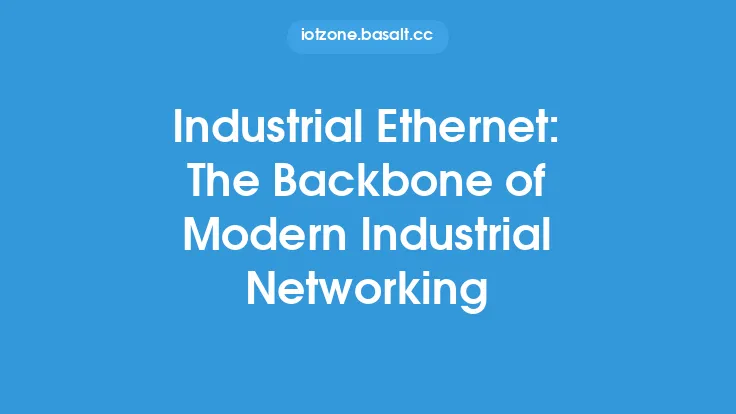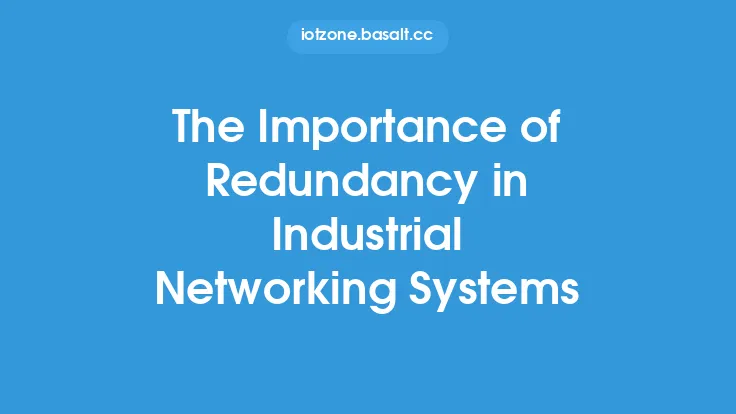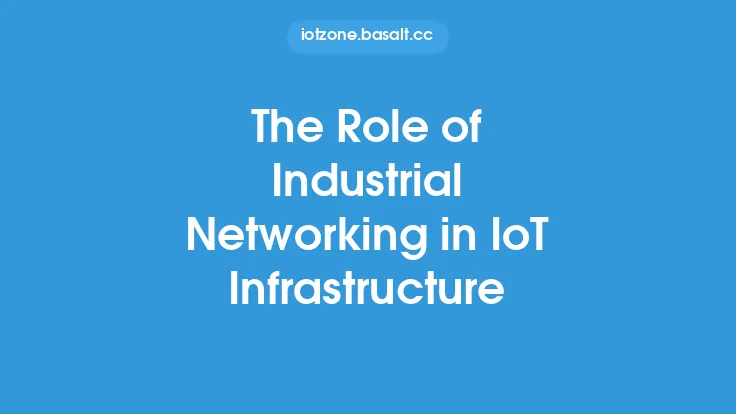Industrial networking is a crucial component of the Industrial Internet of Things (IIoT), enabling the connection and communication between devices, machines, and systems in industrial environments. At its core, industrial networking involves the use of standardized protocols and technologies to facilitate the exchange of data between devices, allowing for real-time monitoring, control, and optimization of industrial processes. In this article, we will delve into the fundamentals of industrial networking, exploring the key concepts, technologies, and considerations that underpin this critical aspect of IIoT.
Introduction to Industrial Networking
Industrial networking is distinct from traditional enterprise networking, with unique requirements and challenges. Industrial networks must operate in harsh environments, with exposure to extreme temperatures, vibrations, and electromagnetic interference. Additionally, industrial networks must prioritize reliability, availability, and security, as downtime or data breaches can have significant consequences for industrial operations. Industrial networking protocols and technologies are designed to address these challenges, providing a robust and secure foundation for industrial communication.
Network Topologies and Architectures
Industrial networks can be configured in various topologies, including star, ring, bus, and mesh architectures. Each topology has its advantages and disadvantages, and the choice of topology depends on the specific requirements of the industrial application. For example, a star topology is commonly used in industrial settings, as it provides a high degree of reliability and fault tolerance. In contrast, a ring topology is often used in applications where high-speed data transfer is critical, such as in video surveillance systems. Understanding the different network topologies and architectures is essential for designing and implementing an effective industrial network.
Industrial Networking Protocols
Industrial networking protocols are standardized sets of rules and conventions that govern communication between devices on an industrial network. Common industrial networking protocols include EtherNet/IP, Modbus, Profinet, and DeviceNet. Each protocol has its strengths and weaknesses, and the choice of protocol depends on the specific requirements of the industrial application. For example, EtherNet/IP is a widely used protocol in industrial settings, as it provides a high degree of flexibility and scalability. In contrast, Modbus is a simpler protocol that is often used in applications where low cost and ease of implementation are critical.
Network Devices and Equipment
Industrial networks rely on a range of devices and equipment, including switches, routers, gateways, and network interface cards (NICs). These devices play a critical role in facilitating communication between devices on the network, and must be designed to operate in harsh industrial environments. Industrial network devices and equipment must also be designed with security and reliability in mind, as they are often the weakest link in the network. Understanding the different types of network devices and equipment is essential for designing and implementing an effective industrial network.
Cabling and Connectivity
Industrial networks rely on a range of cabling and connectivity options, including copper, fiber, and wireless technologies. The choice of cabling and connectivity option depends on the specific requirements of the industrial application, including the distance between devices, the level of electromagnetic interference, and the need for mobility. For example, copper cabling is commonly used in industrial settings, as it provides a high degree of reliability and affordability. In contrast, fiber optic cabling is often used in applications where high-speed data transfer is critical, such as in video surveillance systems.
Power Over Ethernet (PoE)
Power over Ethernet (PoE) is a technology that allows network devices to be powered over the same cabling that carries data. PoE is commonly used in industrial settings, as it provides a convenient and reliable way to power devices such as cameras, sensors, and actuators. PoE devices can be powered from a central location, reducing the need for separate power cables and increasing the overall reliability of the network. Understanding the principles of PoE is essential for designing and implementing an effective industrial network.
Quality of Service (QoS)
Quality of Service (QoS) refers to the ability of a network to prioritize and manage different types of traffic. In industrial settings, QoS is critical, as it ensures that time-sensitive traffic such as control signals and video feeds are given priority over less critical traffic such as email and file transfers. QoS can be implemented using a range of techniques, including traffic shaping, policing, and prioritization. Understanding the principles of QoS is essential for designing and implementing an effective industrial network.
Network Security
Network security is a critical aspect of industrial networking, as industrial networks are often vulnerable to cyber threats and attacks. Industrial networks must be designed with security in mind, using techniques such as firewalls, intrusion detection systems, and encryption to protect against unauthorized access and data breaches. Understanding the principles of network security is essential for designing and implementing an effective industrial network.
Conclusion
Industrial networking is a complex and multifaceted field, requiring a deep understanding of the underlying technologies and protocols. By understanding the fundamentals of industrial networking, including network topologies and architectures, industrial networking protocols, network devices and equipment, cabling and connectivity, PoE, QoS, and network security, industrial professionals can design and implement effective industrial networks that meet the unique requirements of their applications. Whether you are an experienced industrial professional or just starting out, this article has provided a comprehensive overview of the fundamentals of industrial networking, and has laid the foundation for further exploration and learning in this critical aspect of IIoT.





